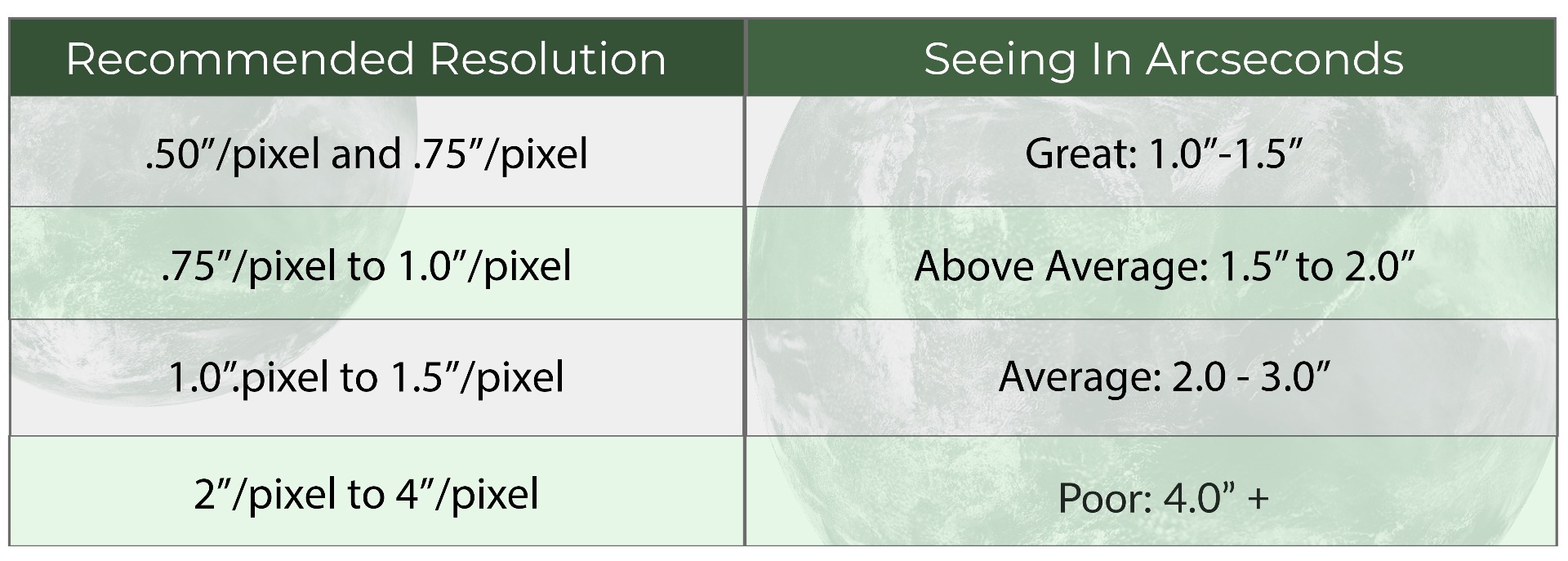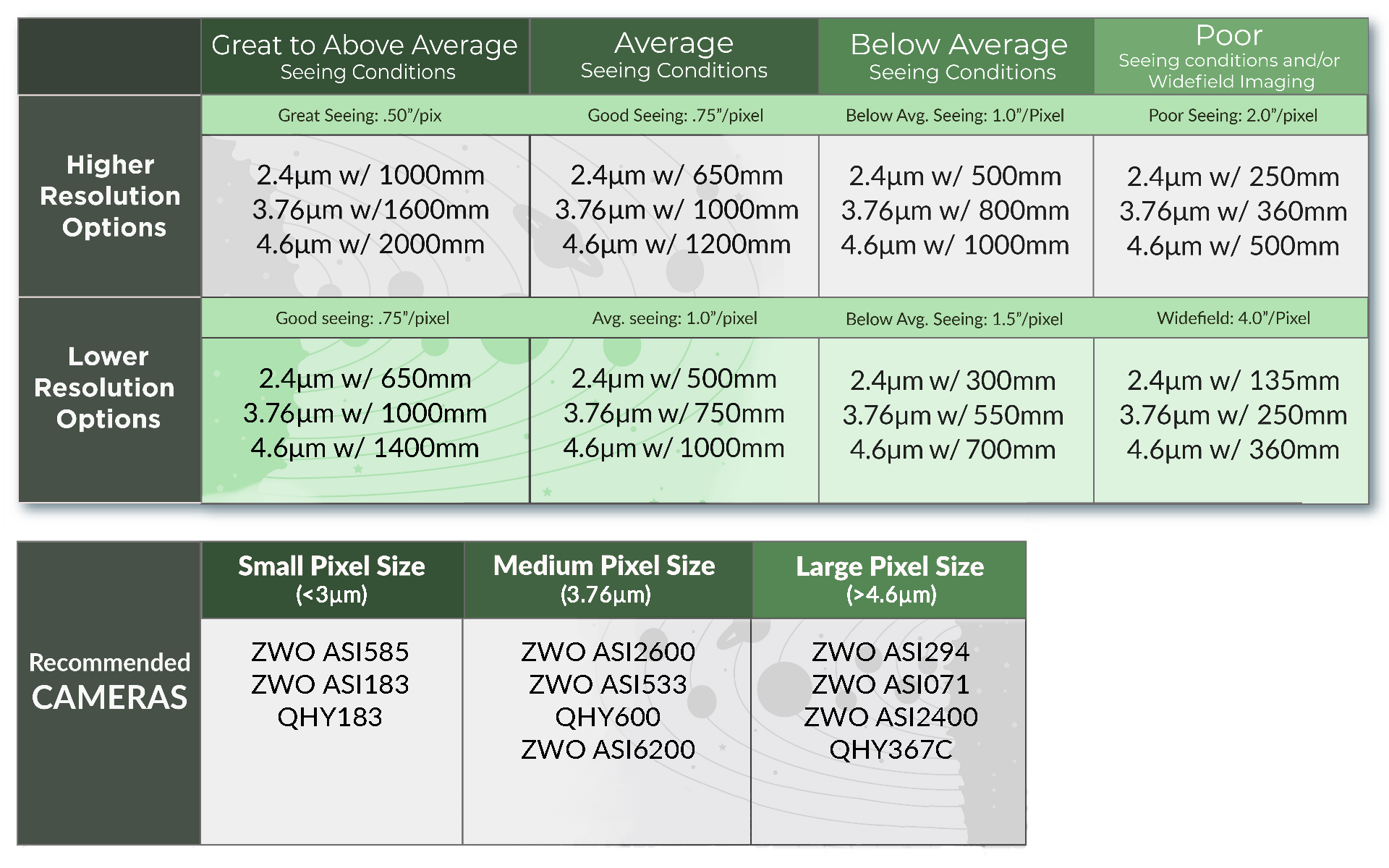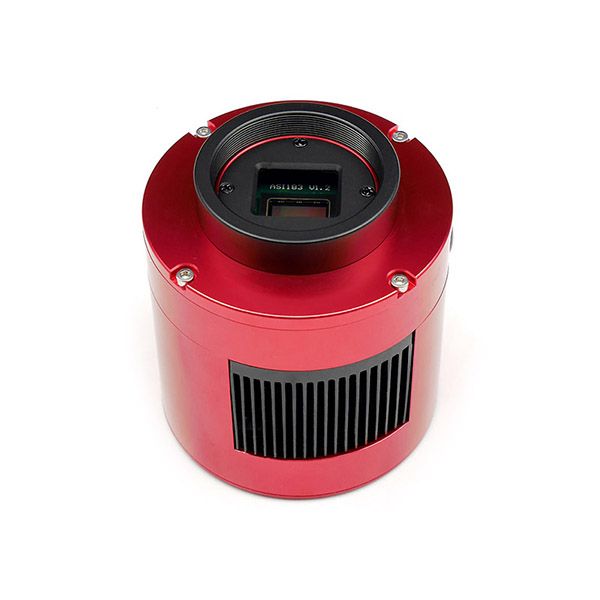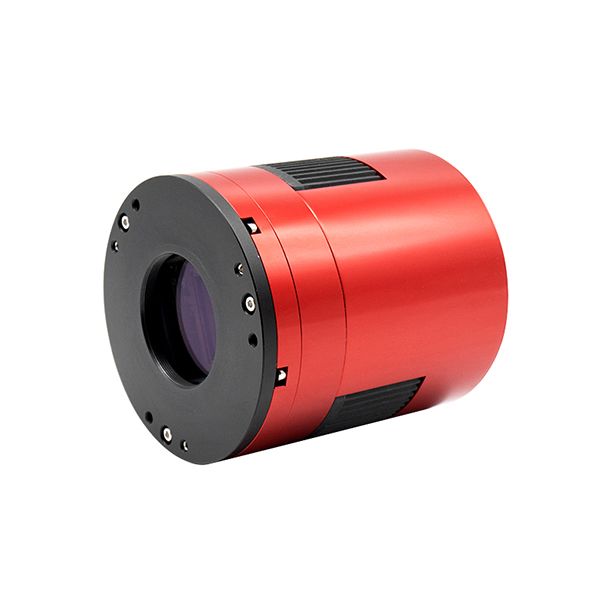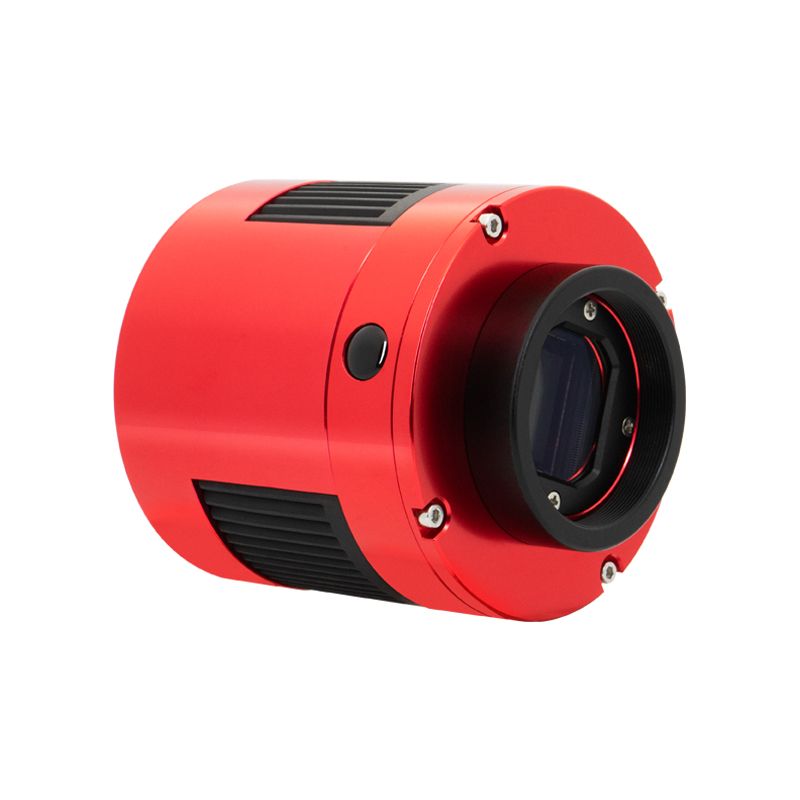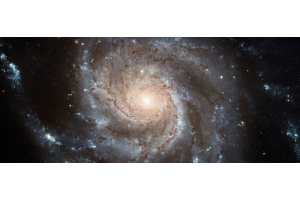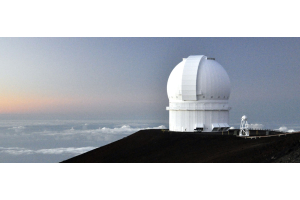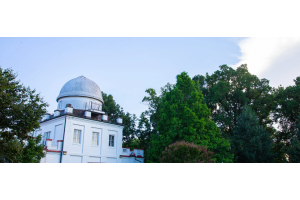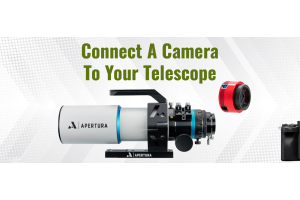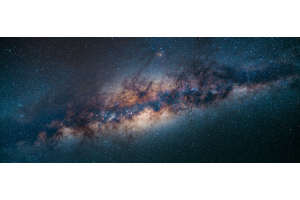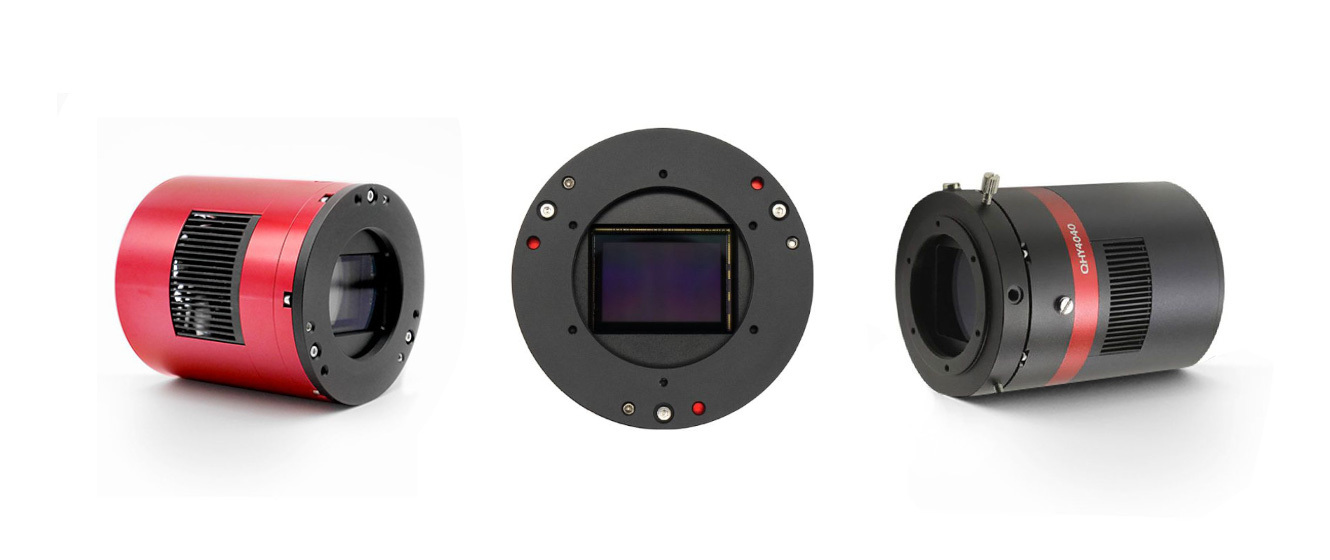
Choosing the best deep sky camera can be difficult. No one camera is the best, nor pairs the best with a single scope! Correctly pairing your scope's focal length with your camera's pixel size is an important step towards maximizing the performance of your imaging rig. Your seeing conditions — levels of atmospheric turbulence, cloud cover and humidity — all play a major role in image quality. While most of us live under average seeing conditions, it is still important to assess what your average conditions are before making a choice!
So you've decided that you want to enter the exciting world of deep sky astrophotography, and are looking for a camera that can capture those incredible celestial bodies — but which camera do you need? Will any dedicated astrophotography camera work? While any dedicated astrophotography camera can give you an image, to ensure you're getting the most out of your setup it is important to make sure you're not under or oversampling! We explore the consequences of this in our article Undersampling and Oversampling in Astrophotography, but today will be taking a look at how you can avoid these pitfalls by properly pairing camera pixel sizes with your scope and seeing conditions, as well as providing some excellent cooled camera recommendations with pixel sizes both large and small!
How Do I Determine My Seeing Conditions?
There are many ways for one to determine their average seeing conditions. Seeing conditions can change from week to week, night to night and even from hour to hour. It is rather difficult to determine your average seeing conditions, but a great way to look at your average seeing conditions for your location is using a Clear Sky Chart. This is a great tool to help monitor your average seeing conditions over a period of hours, days, weeks, or months. This can, in turn, help determine which scope/camera combination is best for your location. If you are interested in reading more about seeing conditions, please refer to our detailed article here: Seeing Conditions.

You can determine the resolution (arc-second/pixel) of any scope/camera combination by using this equation. You want your calculated resolution to pair well with your seeing conditions. Reference our “Recommended Resolution” chart above.
This chart is here to help you choose a focal length/camera combination for your given seeing conditions! We chose common focal lengths found in common telescopes designs and common cameras produced by ZWO and QHY. When referencing the chart, start with your seeing conditions and go from there.
The chart demonstrates that smaller pixels pair well with shorter focal length scopes while larger pixels pair best with longer focal length scopes. As seeing conditions increase in quality, smaller pixels can be paired with medium to long focal length scopes. Pairing smaller pixels with longer focal lengths assumes that your seeing conditions are above average to great. Pairing larger pixels with shorter focal lengths assumes your seeing conditions are poor.
Why Do We Recommend These Cameras?
During your research on dedicated astrophotography cameras you've likely found that there are a lot to choose from! While there are plenty of great and very specialized options on the market, we've narrowed this list down to some of the most popular deep space imaging cameras made by ZWO and QHY. These cameras offer great performance for the amateur astrophotographer, and generally work well with a wide variety of software and equipment — with ZWO's Pro line making things especially easy by including spacers for the industry standard 55 mm backfocus in the box. To ensure that you’re able to find the best deep space imaging camera for you, we have chosen cameras that will accommodate a large variety of short, medium, and long focal length telescopes.
While all of the options here will provide great images, be sure to check out our article on how to read and understand camera specs, ZWO Camera Chart and Specification Descriptions, to better select a camera that will work for your goals! Additionally though the ZWO cameras in these lists do include spacers that make finding 55 mm of backfocus simple, we still highly recommend you review How to Connect a Camera to a Telescope to confirm whether these will work for your specific scope — or what you'll need build your unique imaging train!
Looking for more great guides? Check out our articles on basic post processing in PixInsight, adding Ha data to your image in PixInsight, and combining narrowband data into an image with PixInsight for information on creating stellar images with your new astrophotography camera!
Small Pixel Cameras (<3.0 microns)
Smaller pixels means high resolution! These are typically paired with smaller sensors, but don't let the compact nature of these chips fool you, as these cameras offer full-sized performance! Utilizing the tried-and-true Sony IMX183, the ZWO ASI183 and QHY183 sport 2.4 μm pixels for a large 20.2 MP resolution along with a high peak QE. For those looking to push the small pixel class even further, look no further than the ZWO ASI585MC Pro which features slightly larger pixels and a 8.29 MP resolution to increase the peak QE and full-well depth significantly!
Medium Pixel Cameras (3.76 microns)
From 1" Type all the way to Full-Frame sized sensors, monochrome to one-shot color, there's a camera for just about everyone in this pixel category! This includes the incredibly popular ZWO ASI533 Pro and ASI2600 Pro cameras, that combine the versatile 3.76 μm pixel size with solid specifications and a stellar reputation for producing excellent images. For those looking to increase their field of view and resolution, look no further than ZWO's ASI6200 Pro line or QHY's QHY600 cameras which utilize the Sony IMX455 full-frame, 61.2 MP sensor!
For those interested in the incredibly popular ASI2600 Pro series, ZWO also offers versions that squeeze a dedicated guide camera sensor alongside the standalone imaging models' IMX571 APS-C sensor — all in a full-frame image circle. Say good bye guidescopes, OAGs, and second cameras with the ZWO ASI2600 Duo Monochrome and ASI2600 Duo One-Shot Color!
Large Pixel Cameras (>4.6 microns)
When you're looking to maximize pixel size, the ZWO ASI294 Pro is an extremely popular option for those who are interested in high resolution, long focal length imaging. The larger pixels pair very well with medium to longer focal length scopes, and it is available in both monochrome and one shot color models. For those looking for a wider field of view, the ZWO ASI071 Pro is a great option for a larger, Front Side Illuminated, average peak QE, and high full-well depth sensor. Those looking for a lager sensor still to pair with this large pixel size need look no further than the full-frame QHY 367C for a tried-and-true FSI sensor, or the ZWO ASI2400 Pro with its excellent Back Side Illuminated IMX410 sensor that sports high peak QE, excellent full-well depth, and high resolution!
Glossary
Astrophotography
This refers to photography of astronomical bodies and phenomena. Astrophotography is not new, for example the popular T threading still used today harkens from Tamron’s T-mount developed for their 35 mm cameras - however it has seen a notable increase in popularity with improvements in cameras, mounts, filters, and software making astrophotography much more accessible. This is not limited to celestial bodies such as nebulae, planets, or galaxies either, as solar imaging is now more within the reach of the average consumer than ever before.
Dedicated Astronomy Camera
These cameras don’t look like what one traditionally thinks of when imaging a camera; instead taking the form of cylinders or pucks, with no physical controls, displays, or viewfinders to speak of. These require a computer or WiFi control device to take images, with more advanced models additionally requiring external power. What they give in return for all of these concessions is granular control over the sensor settings, increased sensitivity to wavelengths that more traditional cameras filter out, options for deBayered sensors (true monochrome), designs that easily connect with astronomy equipment, and in some cases cooling for increased performance.
Focal Length
The focal length is the distance, usually measured in millimeters, between the primary mirror or lens and the point at which the image comes to focus. Generally, classic refractors have a longer focal length, Newtonian reflectors tend to have a focal length that is shorter, and Schmidt-Cassegrain fall somewhere in the middle.
Full Well Capacity/Full Well Depth
This refers to the amount of signal that a pixel can store before it becomes fully saturated. This becomes important especially with longer exposure times, as if pixels become fully saturated then the contrast between them and surrounding detail will be lost as those details continue to brighten but the saturated pixels remain the same. It is important understand that this is not a static figure, but rather one that much like other camera specifications changes depending on the gain setting.
Megapixels
A megapixel is one million pixels, and refers to the number of pixels a sensor contains. For example, if a sensor has 2,000,000 pixels, then this would be a 2-megapixel (2MP) sensor. These pixels capture light and color from the subject, and when combined, the signal collected results in an image. This measurement of the pixels available determines the resolution of a sensor and overall quality of the image produced. In general, the more pixels a sensor has, the higher resolution images that sensor will yield.
Peak QE
Camera sensors have differing sensitivities to different wavelengths, which are often described as a percentage of how much light of a certain wavelength is converted to actual signal. These are plotted on a graph, which often overlays the sensitivity of the green pixels, red pixels, and blue pixels for each wavelength. The peak quantum efficiency, or peak QE value, is the highest percentage measured across all of the pixels on the camera sensor.
Pixel
Digital images are made up of many, many, small boxes arranged in a grid, and these boxes are called pixels. To create these digital images, camera sensors are similarly made up of thousands or millions of small light measuring components arranged in a grid. These too are referred to as pixels.
Pixel Size
When describing camera sensor pixels, the pixel size refers to the measurement across one pixel, corner to corner. This is listed in μm (micrometers, also called microns).
Sensor
A camera sensor is the main component of a DSLR, deep sky camera, or smart telescope that turns incoming light into data that can then be displayed on digital devices like mobile phones or computers. Accordingly, these are just as important as the optics of a system for a quality image. There are a wide variety of specifications that are important for a sensor - physical size, pixel size, resolution, dynamic range, amounts of image “noise”, and other technologies such as back-side illumination. As a result there is also a wide variety of sensors available that attempt to balance these in differing ways for different applications and price points.
Sensor Size (Full Frame, APS-C, Micro 4/3, Etc.)
Imaging sensors come in many different proportions, such as 4:3 or 1:1, and physical sizes. There are some common combinations that have received a name - full-frame, APS-C, micro four thirds (4/3). The most important component of sensor size for astrophotography is the measurement from corner to corner (diagonal) of the sensor, which can then be compared to a telescope/ corrective element's image circle to assess how well the two may pair.

Still have questions or need help choosing the right astrophotography equipment? Contact our gear experts and shop confidently knowing we have over 115 years of astrophotography experience between us!
This Article was Last Updated on 04/30/2024

